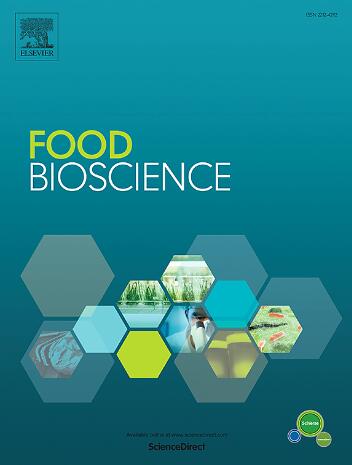Recyclable magnetic HNTs@MIPs-Based SERS sensors for selective, sensitive, and reliable detection of capsaicin for gutter oil discrimination
IF 4.8
1区 农林科学
Q1 FOOD SCIENCE & TECHNOLOGY
引用次数: 0
Abstract
Gutter oil, which poses a serious threat to human health and has generated widespread attention in recent years, is misused as cooking oil, creating a major food safety concern. Capsaicin has been identified as a promising indicator for the detection of gutter oil. Hence, in this study, we introduce a novel hybrid approach for capsaicin detection that combines magnetic molecular imprinting (MMIP) with surface-enhanced Raman scattering (SERS) technology to rapidly and accurately identify gutter oil. A magnetic molecularly imprinted polymer is developed with the incorporation of purified halloysite nanotubes, which provide a large specific surface area. The resulting product, magnetic halloysite molecularly imprinted polymers (MHNTs@MIPs), serves as a specific isolation material for the enrichment of capsaicin from complex matrices. The Ag NPs@Si (silver nanoparticles deposited on a silicon wafer surface) and Au NPs (gold nanoparticles), known for their excellent signal enhancement capabilities, work synergistically as the SERS substrate. Substantially enhanced SERS peaks are observed at 1173 cm−1, indicating the potential of this method for capsaicin detection and gutter oil identification. A strong log-linear relationship between SERS intensity and the logarithm of capsaicin concentration is established across a wide range of 0.05–100 μM, with a detection limit of 67.7 nM. Furthermore, for both simulated and real gutter oil samples, capsaicin recovery rates of 95.5%–110.3% and 96.3%–104.9% were achieved using the SERS sensor, demonstrating good consistency with certified high-performance liquid chromatography (HPLC) results. Therefore, this SERS sensor can be served as efficient method for detecting capsaicin and monitoring oil quality.
求助全文
约1分钟内获得全文
求助全文
来源期刊

Food Bioscience
Biochemistry, Genetics and Molecular Biology-Biochemistry
CiteScore
6.40
自引率
5.80%
发文量
671
审稿时长
27 days
期刊介绍:
Food Bioscience is a peer-reviewed journal that aims to provide a forum for recent developments in the field of bio-related food research. The journal focuses on both fundamental and applied research worldwide, with special attention to ethnic and cultural aspects of food bioresearch.
 求助内容:
求助内容: 应助结果提醒方式:
应助结果提醒方式:


